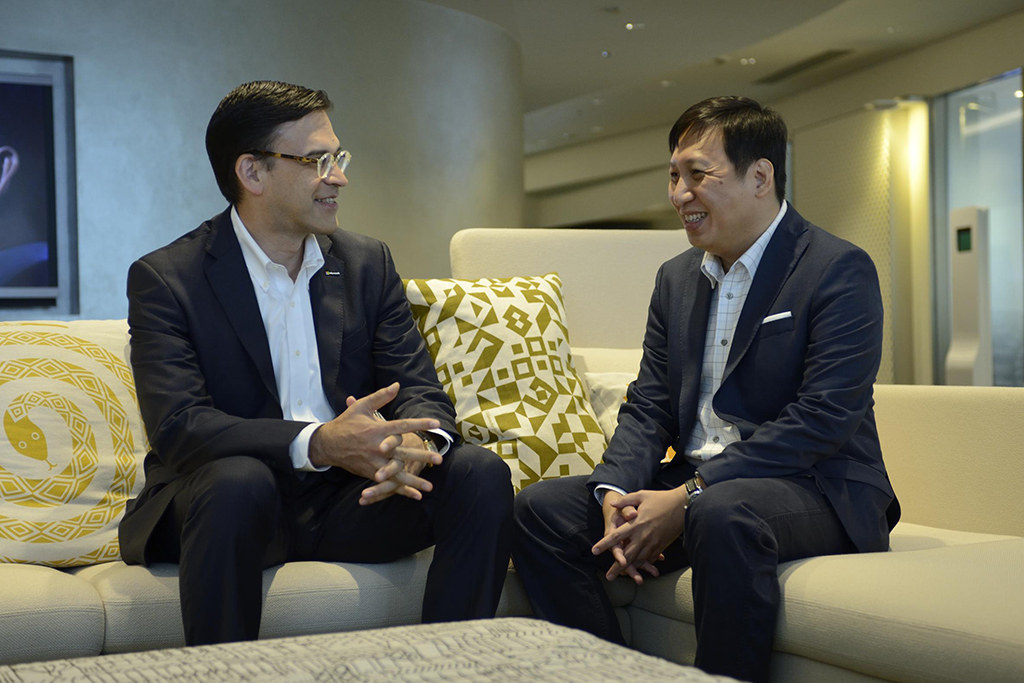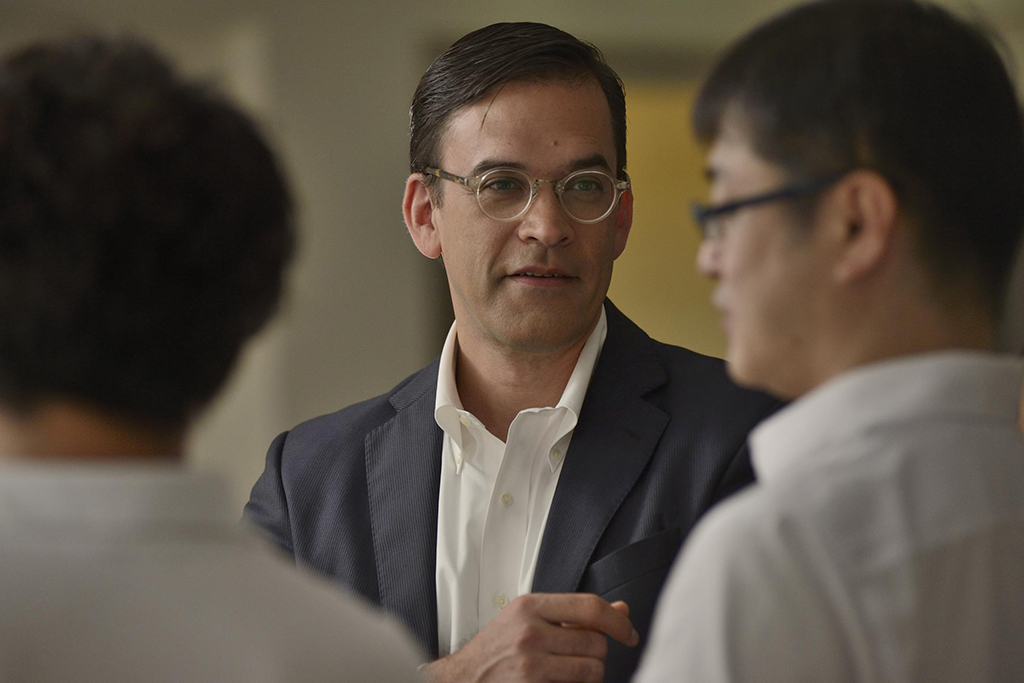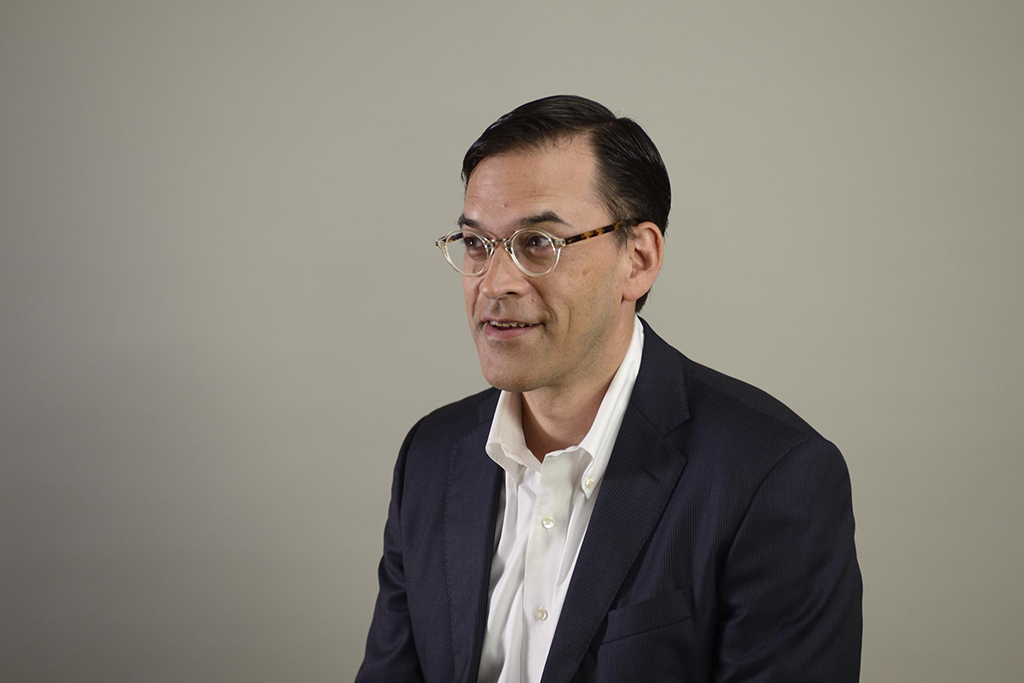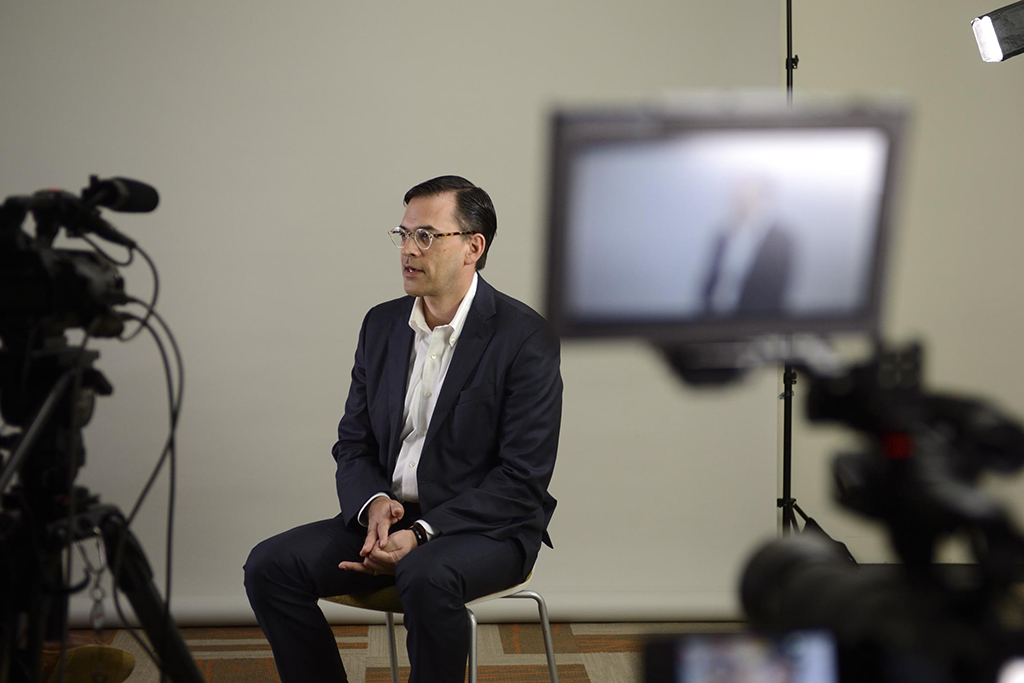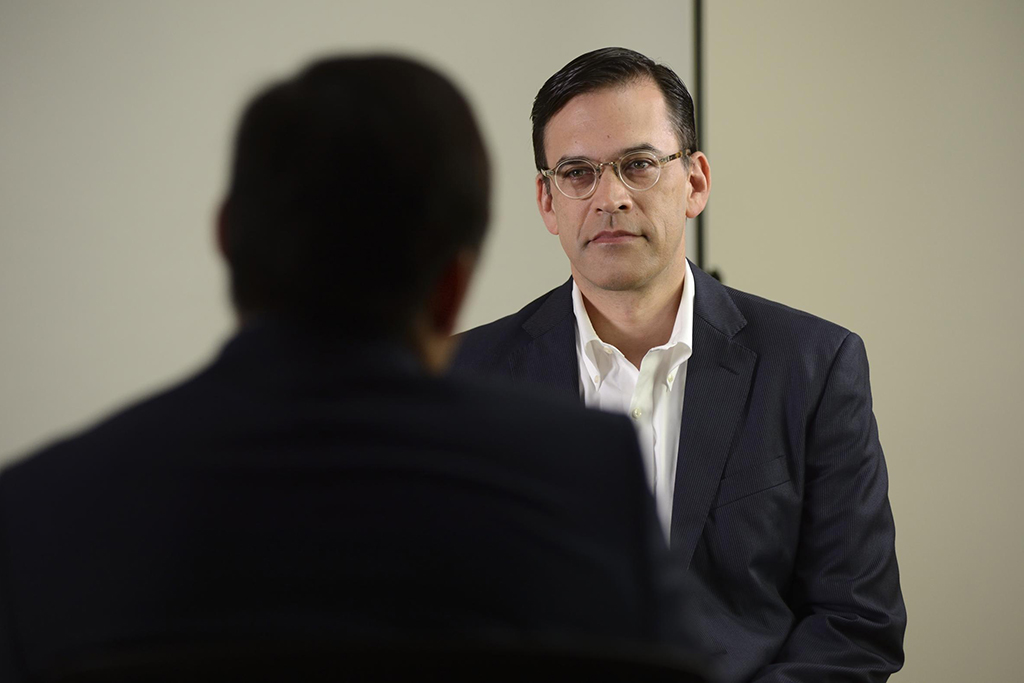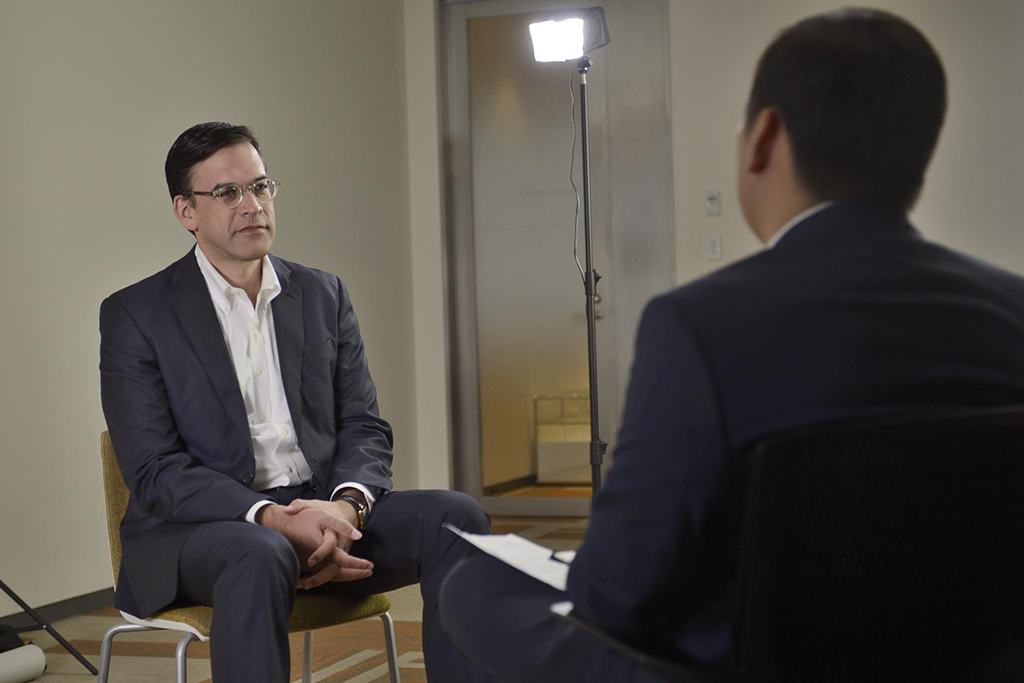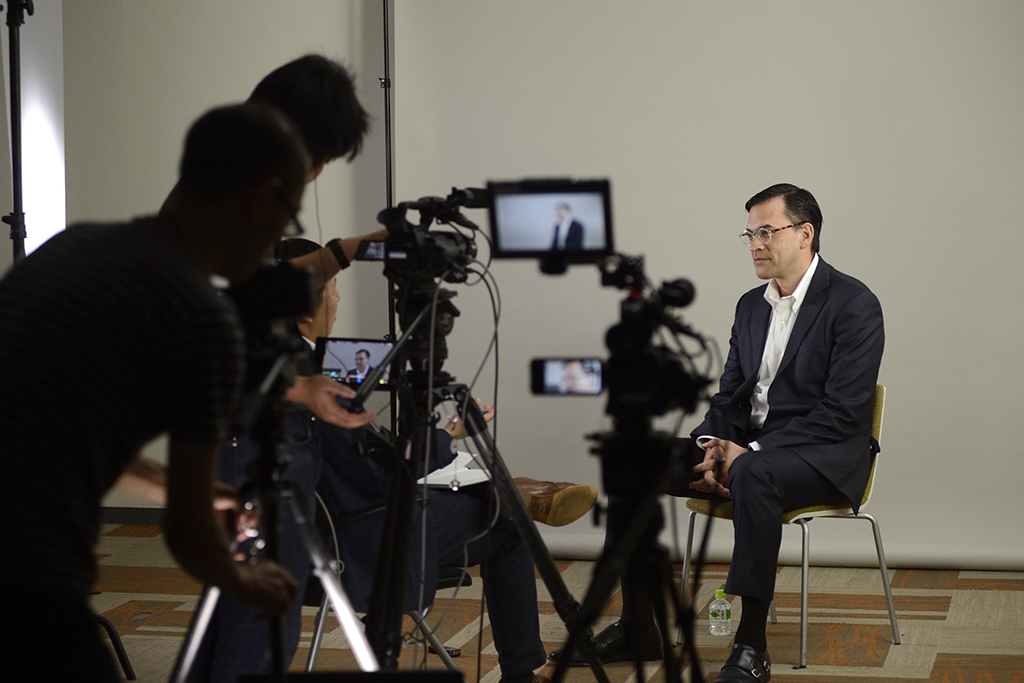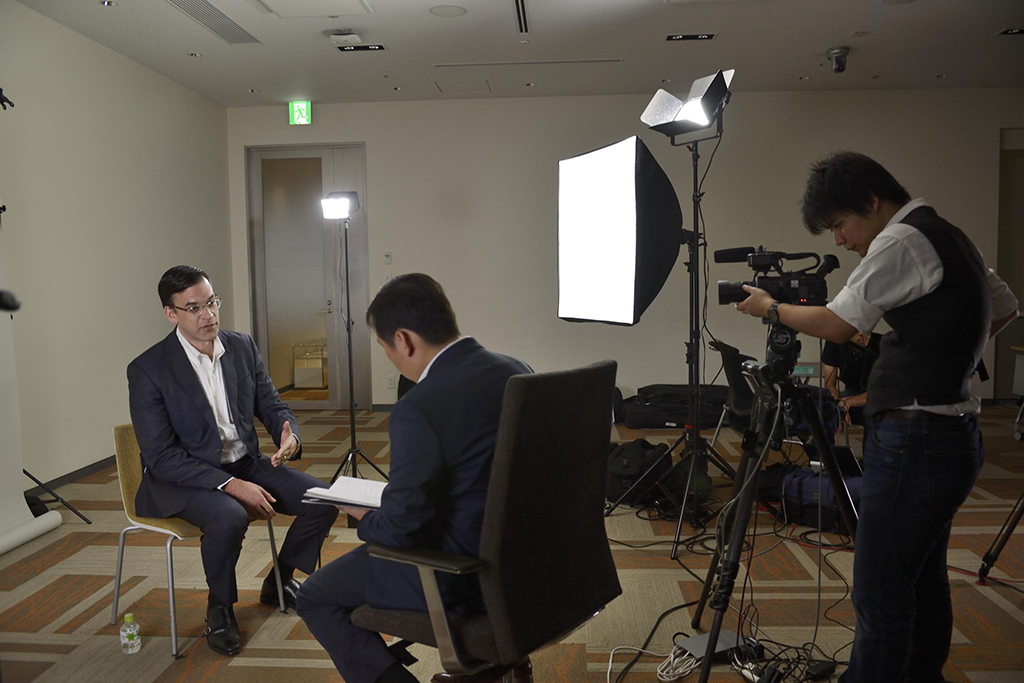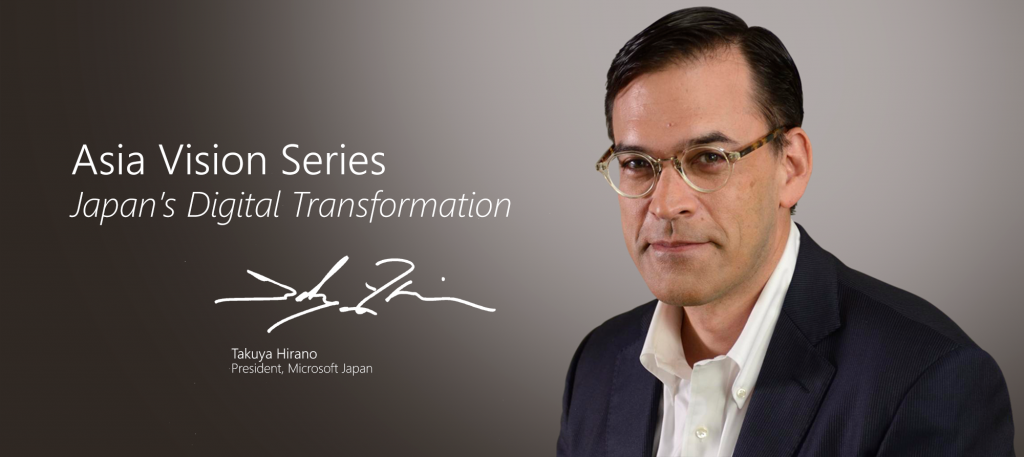
Putting digital transformation on the business agenda
In our Asia Vision Series features, we dive into key industry trends and issues with our subject matter experts and visionaries in the region. In part 2 of 3 in this interview, Alfred Siew, a veteran IT journalist formerly with Singapore broadsheet The Straits Times and founding editor of a popular technology blog, speaks with Takuya Hirano, president of Microsoft Japan. They dive into issues affecting Japan’s digital transformation journey. On a personal level, Hirano also shares how his own sense of identity and global experiences have shaped his world view.
Digital transformation is not just about moving to digital platforms, or upgrading IT resources. Empowering employees and optimizing work processes are also critical parts of the equation.
Wanting to leverage the power of the cloud and mobile, Microsoft Japan began exploring the idea of teleworking five years ago. However, it was not until the company’s experience with the Great East Japan Earthquake on March 11, 2011, that its shift to teleworking really gained traction.
“The earthquake forced us to adapt our work style, so that we could work 100 percent mobile. So the day or the next day after the earthquake, all our employees were able to continue to work,” says Takuya Hirano, president of Microsoft Japan. “We called all our customers to make sure that they were okay, asking them if there was anything we could do to help.”
The experimentation with teleworking was so successful – and productive, that it validated a new style of work going forward. Fast forward to today, employees can enjoy the flexibility of freely working from remote locations as required – a movement that Microsoft believes is spreading across the country.
In Japan, teleworking represents a big change from the long hours that employees are often expected to physically spend in the office. This deeply entrenched culture has often been blamed for negatively impacting the national productivity rate, due to factors such as time spent on commuting. This also often discourages female workers from contributing to the labor force – even on a part time basis, after they have started a family.
Japan was ranked 22nd in the world for labor productivity among OECD countries in 2015, and has held the lowest score among the G7 countries for the past 20 years. In fact, improving the country’s productivity has become such a national issue – the government recently appointed a Minister of Workstyle Innovation to address the challenge.
To contribute to the improvement of the nation’s work-life balance, the government in 2014 began supporting small businesses who introduce telework programs, including subsidies of up to three-quarters of initial cost and a maximum limit of 1.5 million yen (US$13,500) for communications and other equipment needed.
By 2020, Japan aims to increase the number of companies offering telecommuting options threefold from 2012. It has also set a target of raising the ratio of those working from home at least one full day per week, to 10 percent or more of the total labor force.

Embracing technologies to work in a smarter and more productive fashion is part of the journey of digital transformation.
“Work style innovation is a super important topic not just for me personally, but also for the company and government,” says Hirano. “So I feel good that we are aligned to help everyone in the journey of digital transformation.”
“We have been inviting customers and partners to join us in our teleworking movement from 2012. Last year, we had 651 participants for “Telework Week 2015”. This year, we collaborated with 833 companies for an expanded version called “Workstyle Innovation Week 2016 in collaboration with the government,” he says.
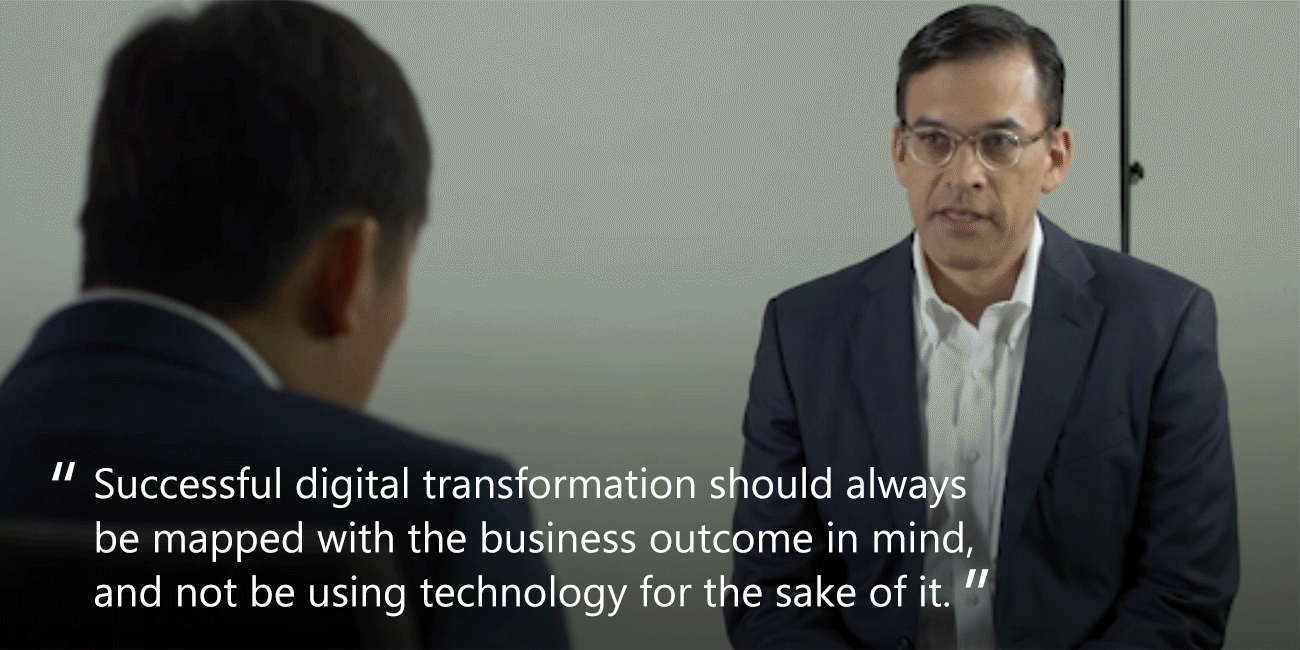
Since embarking on this new world of work, Microsoft Japan now regularly measures how successful its work style innovation has been. Employees are rewarded for making calls and arranging meetings more promptly.
“A Japanese company, on average, takes about 10 days before they have an official meeting, from asking for the meeting to an actual meeting to happen; in our case, 5.5 days,” says Hirano. “The new work style empowers employees with the flexibility to not only become more productive but also achieve more work-life balance. This has helped significantly in attracting and retaining talent. In fact, we have halved the attrition rate of female staff.
Ultimately, the digital transformation journey needs to be well-thought out and be mapped to business outcomes as different companies will have different objectives.
“In helping companies transform, we have learnt it is more efficient to ask not only what they need but to try harder to understand their issues and find new ways of getting the desired result. Whether this is using machine learning, cognitive technology or IoT (Internet of Things) – the bottom line should be about the impact that the transformation brings,” explains Hirano.
The change should not be about moving to digital for the sake of doing so, he added.
In the next segment, find out how culture can be an agent of change. Revisit part 1 here where Hirano shared his views on Japan’s potential for digital transformation.
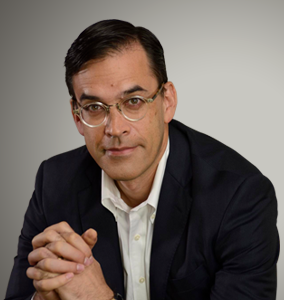 Takuya Hirano
Takuya Hirano
President, Microsoft Japan
Takuya Hirano leads Microsoft Japan’s operations from Tokyo. He joined the company in 2005 as a senior director, and was in charge of developing its overall business growth plan. Hirano then moved to oversee all aspects of the business in the 25 countries under Microsoft’s Central & Eastern Europe organization from 2011 to 2014, before returning to Microsoft Japan. He has also spent several years of his professional life in Silicon Valley, California. Hirano was born in Hokkaido, Japan and holds a Bachelor’s Degree in International Relations from Brigham Young University.
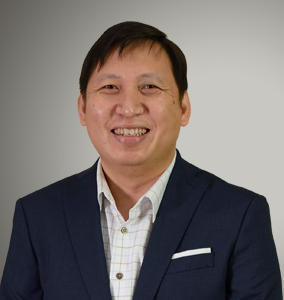 Alfred Siew
Alfred Siew
Alfred is a writer and speaker with close to 20 years of experience in journalism and communications in Singapore and Southeast Asia. Previously a technology correspondent with Singapore’s national broadsheet The Straits Times, he has covered the regional technology scene for over a decade. He now runs a popular technology blog – which is keenly followed by consumers, CEOs and government regulators alike, as well as his own editorial consultancy firm.





